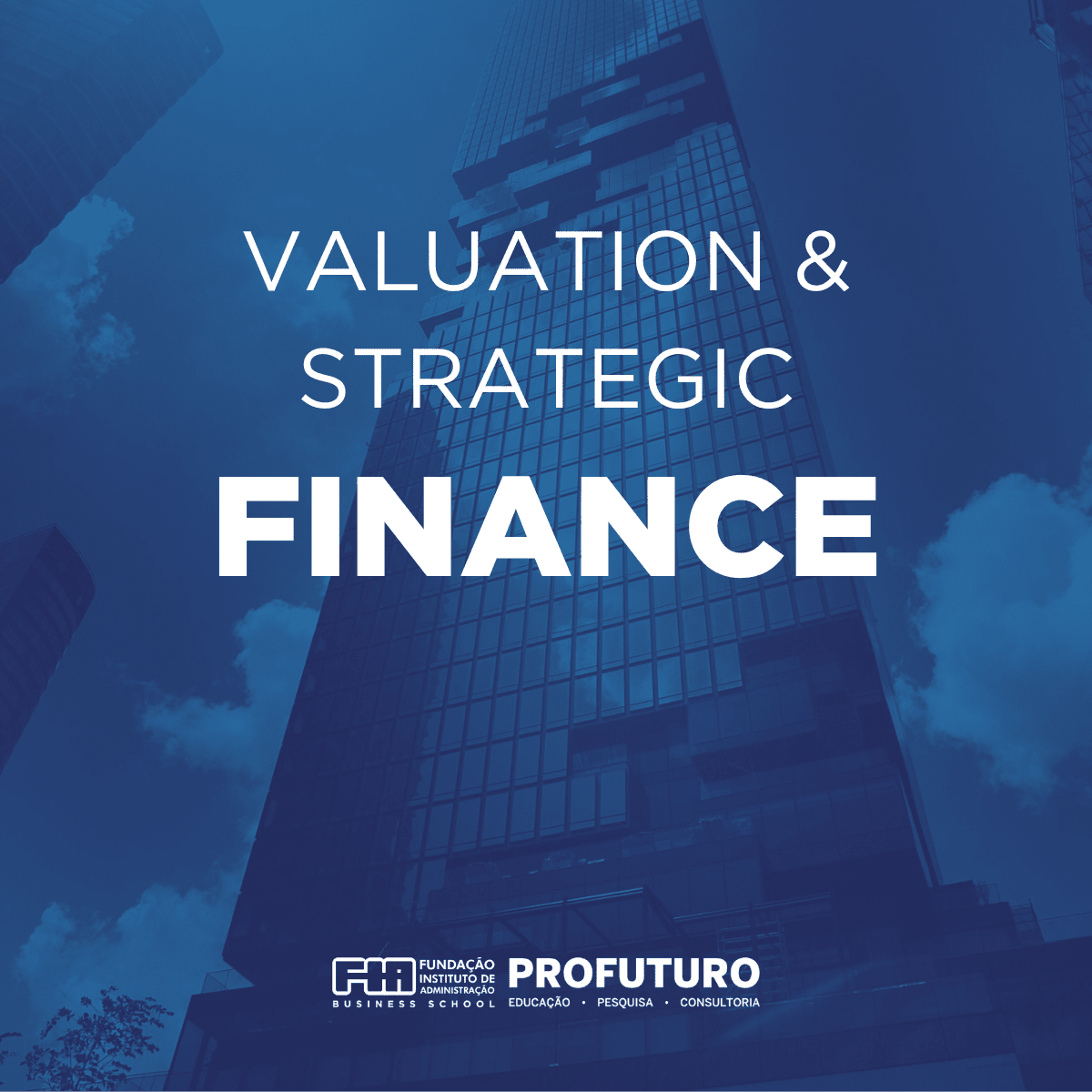Fund Manager
Becoming a Fund Manager: Navigating the World of Investment Strategy
A Fund Manager is a professional responsible for overseeing and making decisions about a pool of investments, known as a fund. Their primary goal is to grow the value of the fund's assets on behalf of investors, balancing potential returns against acceptable levels of risk. They achieve this by researching markets, selecting assets like stocks, bonds, or real estate, and continuously monitoring the fund's performance.
Working as a Fund Manager can be incredibly engaging. It involves deep analytical thinking, strategic decision-making under pressure, and staying constantly informed about global economic trends and company performance. For those fascinated by financial markets and driven by achieving measurable results, the dynamic nature of managing investments and aiming to outperform benchmarks offers a compelling career challenge.
Introduction to Fund Management
Fund management sits at the heart of the investment world. It bridges the gap between individuals or institutions with capital to invest and the various opportunities available in financial markets. Understanding this role is key for anyone considering a career in finance, particularly in asset management.
Definition of a Fund Manager and Core Responsibilities
A Fund Manager, sometimes also called a Portfolio Manager or Asset Manager, is entrusted with implementing a fund's specific investment strategy and managing its trading activities. They are the strategic minds responsible for deciding which assets to buy, hold, or sell within the fund to meet its objectives, such as maximizing returns or minimizing risk for investors.
Core responsibilities include conducting in-depth research on companies, industries, and economic conditions to identify promising investment opportunities. They construct and rebalance the portfolio, manage risk exposure, monitor performance against benchmarks, and communicate strategies and results to clients or stakeholders. This requires a blend of analytical skill, market knowledge, and decisive action.
Fund managers operate under specific mandates outlined in a fund's prospectus, which dictates the investment style, risk tolerance, and types of assets the fund can hold. Their success is often measured by the fund's performance relative to a benchmark index (like the S&P 500) or its peer group.
Historical Evolution of Fund Management as a Profession
The concept of pooling money for investment dates back centuries, but modern fund management largely emerged in the early 20th century with the creation of the first mutual funds. These vehicles allowed smaller investors access to diversified portfolios managed by professionals, democratizing investment.
Initially, fund management was often relationship-based and less quantitatively driven. However, the post-WWII era saw the development of modern portfolio theory, pioneered by figures like Harry Markowitz, which introduced rigorous mathematical frameworks for diversification and risk management.
The latter half of the 20th century witnessed explosive growth in the industry, driven by deregulation, the rise of institutional investors (like pension funds and endowments), and technological advancements. The profession became increasingly sophisticated, demanding specialized expertise in quantitative analysis, global markets, and complex financial instruments.
Today, fund management is a highly regulated, global industry adapting to new trends like sustainable investing (ESG), algorithmic trading, and passive investment strategies, continually reshaping the role and skills required of managers.
To grasp the foundational principles guiding many successful fund managers, consider exploring the seminal works that have shaped investment philosophy.
Key Industries and Sectors Where Fund Managers Operate
Fund managers are central figures across the financial services landscape. They work within various types of organizations, each serving different clienteles and investment objectives.
Major employers include large investment management firms that offer mutual funds, exchange-traded funds (ETFs), and separately managed accounts to retail and institutional investors. Banks and insurance companies often have asset management divisions managing client assets and their own capital.
Hedge funds represent another significant sector, employing managers who utilize diverse and often complex strategies aiming for absolute returns, typically serving high-net-worth individuals and institutional clients. Pension funds (both public and private), endowments, and foundations also employ fund managers to oversee their substantial long-term investment pools.
Additionally, family offices, managing the wealth of affluent families, and sovereign wealth funds, managing national reserves, rely on skilled fund managers. The specific strategies and focus areas can vary widely depending on the institution and its mandate.
What Does a Fund Manager Do?
The daily life of a fund manager is dynamic and demanding, blending deep analysis with decisive action. They are responsible for navigating complex markets to achieve the investment goals set for the funds they manage.
Portfolio Construction and Asset Allocation Strategies
A core task is building and maintaining investment portfolios. This involves deciding how to allocate the fund's capital across different asset classes (like stocks, bonds, real estate, commodities) and geographic regions. This strategic allocation is based on the fund's objectives, risk tolerance, and the manager's outlook on market conditions.
Within each asset class, the manager selects specific securities. For example, in an equity fund, this means choosing which company stocks to buy. This selection process relies heavily on research – analyzing company financials, management quality, industry trends, and macroeconomic factors. Managers might follow different styles, such as value investing (seeking undervalued stocks) or growth investing (focusing on companies with high growth potential).
Portfolio construction is not a one-time event. Managers continually monitor investments and market conditions, making adjustments (rebalancing) to keep the portfolio aligned with its strategy and risk profile. This involves deciding when to sell existing holdings and when to buy new ones.
These courses provide practical insights into building and managing investment portfolios, covering key concepts from valuation to strategy implementation.
For deeper theoretical understanding combined with practical application, these books are highly recommended.
Risk Management Frameworks in Practice
Managing risk is paramount in fund management. Fund managers employ various frameworks and techniques to identify, measure, and mitigate potential risks within the portfolio. This involves understanding different types of risk, such as market risk (losses due to broad market movements), credit risk (losses from a borrower defaulting), liquidity risk (inability to sell an asset quickly without loss), and operational risk (losses from failed processes or systems).
Techniques include diversification (spreading investments across various assets to reduce the impact of any single loss), hedging (using financial instruments like derivatives to offset potential losses), and setting exposure limits (restricting the amount invested in any single security, sector, or region).
Quantitative tools are often used, such as Value at Risk (VaR) models to estimate potential portfolio losses, stress testing to simulate performance under adverse market conditions, and scenario analysis to assess impacts of specific events. Effective risk management ensures the fund operates within its stated risk parameters and protects investor capital during market downturns.
Understanding the cost of capital is fundamental to assessing risk and return trade-offs in investment decisions.
Client Reporting and Stakeholder Communication
Fund managers regularly communicate with clients, investors, and internal stakeholders. This involves preparing and presenting reports on the fund's performance, strategy, positioning, and market outlook. Clarity and transparency are crucial for building and maintaining trust.
Reports typically detail performance figures, compare them against relevant benchmarks, explain key investment decisions, and provide commentary on market conditions. Managers may also participate in client meetings, conference calls, or roadshows to discuss the fund and answer questions directly.
Effective communication skills are vital. Managers need to articulate complex financial concepts in an understandable way, manage expectations, and justify their investment strategies, especially during periods of underperformance. This aspect of the role requires strong presentation and interpersonal abilities alongside analytical expertise.
Performance Benchmarking Against Indices
A fund manager's success is typically measured against a relevant benchmark index (e.g., a stock market index like the S&P 500 for a US large-cap equity fund) or a peer group of similar funds. Performance benchmarking helps investors assess how well the manager is doing relative to the market or competitors.
Key metrics include total return, risk-adjusted return (e.g., Sharpe ratio, which measures return per unit of risk), and alpha (the excess return generated above the benchmark, attributed to the manager's skill). Managers analyze these metrics to understand the drivers of performance and identify areas for improvement.
Outperforming the benchmark consistently is often a primary goal for active fund managers. They strive to demonstrate that their active management decisions (stock selection, market timing) add value beyond simply tracking the market. Understanding how performance is measured and attributed is crucial for both managers and investors.
Understanding how to analyze market movements and evaluate investment performance is crucial for benchmarking.
Formal Education Pathways
Embarking on a career as a fund manager typically requires a strong educational foundation, often complemented by professional certifications and practical experience. The path is rigorous, reflecting the demanding nature of the role.
Relevant Bachelor's Degrees
A bachelor's degree is generally the minimum requirement to enter the field, often starting in an analyst role. Degrees in Finance, Economics, Accounting, Business Administration, or Mathematics provide a solid grounding in the quantitative and analytical skills needed.
Coursework in these programs often covers financial markets, corporate finance, investment principles, statistics, and economic theory. Strong academic performance is important, as competition for entry-level positions can be intense. Internships during university are highly valuable for gaining practical experience and industry contacts.
While the specific major can vary, a demonstrated aptitude for quantitative analysis, critical thinking, and understanding financial concepts is key. Some individuals also enter from STEM fields like engineering or physics, particularly for quantitative fund management roles, leveraging their strong mathematical backgrounds.
These courses offer foundational knowledge in corporate finance and accounting, essential for understanding the numbers behind investment decisions.
CFA Certification Process and Timelines
The Chartered Financial Analyst (CFA) designation, awarded by the CFA Institute, is widely regarded as the gold standard credential for investment management professionals. Earning the charter demonstrates mastery of a broad range of investment topics and a commitment to ethical conduct.
The process involves passing three sequential, rigorous exams (Level I, II, and III) covering topics like ethics, quantitative methods, economics, financial reporting, corporate finance, equity investments, fixed income, derivatives, alternative investments, and portfolio management. Candidates typically need several hundred hours of study for each exam, and pass rates can be challenging.
In addition to passing the exams, candidates must meet educational requirements (usually a bachelor's degree or equivalent) and accrue sufficient relevant professional work experience (typically 4,000 hours over at least 36 months). They must also adhere to the CFA Institute Code of Ethics and Standards of Professional Conduct. While not legally required, the CFA charter significantly enhances career prospects in fund management.
While specific CFA preparation courses aren't listed here, understanding related areas like credit risk analysis is beneficial.
MBA Programs with Asset Management Specializations
A Master of Business Administration (MBA) degree, particularly from a top-tier business school with a strong finance or asset management specialization, can also be a valuable pathway, especially for career changers or those aiming for leadership roles.
MBA programs provide a broader business education, including strategy, leadership, and marketing, alongside finance coursework. They offer excellent networking opportunities with peers, faculty, and potential employers through career services and alumni networks.
While an MBA is a significant investment of time and money, it can accelerate career progression for some, opening doors to more senior management positions within investment firms. Some individuals pursue both an MBA and the CFA charter to combine broad business acumen with deep investment expertise.
Valuation skills are critical in finance, and these courses can supplement MBA studies or stand alone.
PhD Routes for Quantitative Fund Management
For roles focused on highly mathematical and data-driven investment strategies (often called "quant" roles), a PhD in a quantitative field like Finance, Economics, Mathematics, Statistics, Physics, or Computer Science can be advantageous.
These advanced degrees equip individuals with deep expertise in mathematical modeling, statistical analysis, programming, and handling large datasets – skills essential for developing and implementing complex algorithmic trading strategies or sophisticated risk models.
Quantitative funds (often hedge funds or specialized divisions within larger firms) actively recruit PhD graduates for research and portfolio management positions. This path requires exceptional quantitative aptitude and a strong interest in applying academic research methods to financial markets.
Understanding advanced concepts in stocks and bonds is foundational, even for quantitative specialists.
Career Progression in Fund Management
The path to becoming a senior fund manager is typically structured, requiring years of experience, demonstrated skill, and often, advanced qualifications. It's a competitive field with significant rewards for those who excel.
Typical Entry-Level Roles (Analyst Positions)
Most careers in fund management begin with an entry-level position as an Investment Analyst or Research Analyst. Analysts support senior portfolio managers by conducting research on specific companies, industries, or asset classes.
Their responsibilities include gathering data, building financial models, analyzing financial statements, writing research reports, and developing investment recommendations (buy, sell, or hold). This role provides crucial hands-on experience in investment analysis and understanding market dynamics.
Analysts often specialize early on, focusing on a particular sector (e.g., technology, healthcare) or asset type (e.g., equities, fixed income). Strong analytical, quantitative, and communication skills are essential for success at this stage.
These courses cover foundational investment knowledge useful for aspiring analysts.
Promotion Criteria to Portfolio Manager
Advancement from Analyst to Portfolio Manager (or Fund Manager) typically takes several years (often 5-10+ years) and depends on consistent high performance, strong analytical capabilities, sound judgment, and often, obtaining credentials like the CFA charter.
Key criteria include a proven track record of successful investment recommendations, deep expertise in their area of specialization, the ability to develop and articulate a coherent investment philosophy, and strong risk management skills. Leadership potential and effective communication are also important, as managers often lead teams of analysts.
The transition involves shifting from providing research input to making the final investment decisions for a portfolio, managing risk for the entire fund, and being accountable for its performance. It requires not just analytical skill but also decisiveness and the ability to handle pressure.
Understanding different investment vehicles like Private Equity can broaden an analyst's perspective.
Transition Paths to CIO or Executive Roles
Successful and experienced Portfolio Managers can progress further into senior leadership roles within an investment firm. A common path is to become a Chief Investment Officer (CIO).
The CIO oversees the firm's entire investment process, sets overall investment strategy, manages teams of portfolio managers and analysts, and is ultimately responsible for the investment performance across all funds or mandates. This role requires strong leadership, strategic vision, and deep market expertise.
Other executive roles might include Head of Equities, Head of Fixed Income, or even CEO of the asset management firm. These positions involve greater management responsibility, strategic decision-making for the business, and often, significant client-facing duties.
Foundational books on financial management provide context for broader leadership roles.
Alternative Exits to Hedge Funds or Family Offices
Experienced fund managers possess valuable skills transferable to other areas of finance. Many transition to hedge funds, often seeking potentially higher compensation (due to performance fees) and greater flexibility in investment strategies.
Moving to a hedge fund might involve focusing on more specialized or alternative investment approaches. Quantitative analysts and managers, in particular, are often sought after by hedge funds employing complex, model-driven strategies.
Another alternative is joining a family office, managing the wealth of a single ultra-high-net-worth family. This offers a different dynamic, often involving a broader range of asset classes and closer relationships with the clients. Some successful managers may even start their own investment firms.
Understanding alternative investments is key for those considering exits to specialized funds.
Ethical Challenges for Fund Managers
The role of a fund manager carries significant responsibility, not just for financial performance but also for upholding high ethical standards. Navigating potential conflicts of interest and adhering to regulations are critical aspects of the job.
Handling Insider Trading Risks
Fund managers often have access to non-public information about companies through their research activities and interactions with company management. Using material non-public information (MNPI) for trading decisions constitutes insider trading, which is illegal and carries severe penalties.
Firms have strict compliance policies and procedures to prevent insider trading, including information barriers ("Chinese walls"), restricted trading lists, and pre-clearance requirements for personal trades. Managers must be vigilant in identifying potential MNPI and avoiding any actions that could be perceived as exploiting it.
Maintaining ethical integrity and adhering to both legal regulations and firm policies regarding information handling is paramount. Breaches can lead to reputational damage, regulatory sanctions, and career termination.
ESG Integration Controversies
Integrating Environmental, Social, and Governance (ESG) factors into investment decisions has become increasingly prominent, but it's not without challenges and controversies. While many investors demand ESG considerations, defining and measuring these factors consistently can be difficult.
Debates exist around whether focusing on ESG enhances or detracts from financial performance (the concept of fiduciary duty). Some argue ESG integration identifies long-term risks and opportunities, while critics worry it might limit the investment universe or prioritize non-financial goals over returns. According to Sustainability Magazine, global ESG assets are projected to reach substantial figures, highlighting investor interest, yet regional divides and political resistance, particularly noted by The Corporate Governance Institute, complicate a unified approach for 2025.
Fund managers must navigate differing client preferences, evolving regulatory landscapes (like potential disclosure mandates discussed by Capgemini), and the practicalities of integrating often subjective ESG data into their investment process while upholding their duty to clients. Transparency about how ESG factors are considered is crucial.
This course focuses specifically on the growing field of ESG investing and its associated certifications.
Understanding behavioral biases can provide context for navigating market sentiment and ethical dilemmas.
Fee Structure Transparency Issues
Fund management fees, typically charged as a percentage of assets under management (AUM) and sometimes including performance-based fees, can be complex and opaque. Ensuring transparency and fairness in fee structures is an ongoing ethical challenge.
Potential conflicts arise if fee structures incentivize excessive risk-taking or churning (frequent trading to generate commissions). Managers must clearly disclose all fees and expenses to investors and ensure the fee structure aligns with client interests and the value provided.
Debates continue around the fairness of traditional fee models, particularly the "2 and 20" structure common in hedge funds (2% management fee, 20% performance fee). Regulators and investor advocates push for greater clarity and justification of fees relative to performance and services rendered.
Regulatory Compliance Frameworks (SEC, FCA)
The investment management industry is heavily regulated worldwide. Fund managers must operate within complex legal and regulatory frameworks established by bodies like the Securities and Exchange Commission (SEC) in the US or the Financial Conduct Authority (FCA) in the UK.
Regulations cover areas such as fund registration, disclosure requirements, marketing practices, trading rules, custody of assets, and ethical conduct. Compliance departments within firms help ensure adherence, but managers themselves must understand and follow the rules applicable to their activities.
Staying abreast of evolving regulations and ensuring all activities are compliant is a critical, non-negotiable aspect of the job. Failure to comply can result in significant fines, sanctions, and reputational harm for both the manager and the firm.
Global Fund Management Landscape
The fund management industry operates on a global scale, with significant variations in market size, investment strategies, and regulatory environments across different regions. Understanding these nuances is essential for managers operating internationally or investing in global markets.
Regional Differences in AUM Concentration
Assets Under Management (AUM) are not evenly distributed globally. North America, particularly the United States, remains the largest fund management market, followed by Europe and then the Asia-Pacific region. However, growth rates can vary significantly.
Different regions may also have preferences for certain types of investment vehicles or strategies. For example, mutual funds are highly prevalent in the US, while specific structures like UCITS funds are dominant in Europe. Understanding these regional market structures is key for global asset managers.
The concentration of AUM influences competition, fee levels, and the types of opportunities available to fund managers operating within or across these regions.
Exploring courses in different languages can provide insights into regional market perspectives.
Emerging Markets vs Developed Markets Strategies
Investment strategies often differ significantly between developed markets (like the US, Western Europe, Japan) and emerging markets (like China, India, Brazil, South Africa). Developed markets typically offer greater stability, liquidity, and transparency, but potentially lower growth rates.
Emerging markets can offer higher growth potential but often come with increased volatility, political risk, currency fluctuations, and less developed regulatory frameworks. Fund managers specializing in emerging markets require deep local knowledge and expertise in navigating these unique challenges.
Asset allocation decisions often involve balancing exposure between these market types based on risk appetite and growth expectations. Strategies might focus on specific countries, regions, or themes within the emerging market universe.
This course touches upon analyzing financial statements, a skill applicable across global markets.
Cross-Border Regulatory Challenges
Operating across different countries introduces significant regulatory complexity. Fund managers must navigate varying rules regarding fund structures, marketing, taxation, investor protection, and reporting requirements in each jurisdiction.
Compliance becomes a major undertaking for global firms, requiring dedicated resources to understand and adhere to diverse and sometimes conflicting regulations. Harmonization efforts exist (like UCITS in Europe), but substantial differences remain.
Managers need to be aware of how regulations in one country might impact their ability to manage assets or distribute funds in another, affecting portfolio construction and business strategy.
Cultural Factors in Client Management
Client expectations, communication styles, and investment preferences can vary significantly across cultures. Building successful client relationships in a global context requires cultural sensitivity and adaptability.
Risk tolerance levels, preferences for certain asset classes, or expectations around reporting frequency and detail might differ. Managers need to tailor their communication and service approach to resonate with diverse client bases.
Understanding cultural nuances is crucial for building trust and effectively managing relationships with international clients, whether they are institutions or individuals.
Technology in Modern Fund Management
Technology is rapidly transforming the fund management industry, automating processes, enhancing analytical capabilities, and creating new investment opportunities and challenges. Staying abreast of technological advancements is crucial for success.
Algorithmic Trading Systems Implementation
Algorithmic trading, or "algo trading," uses computer programs to execute trades based on predefined rules, often at high speeds. Fund managers increasingly use algorithms for various purposes, from executing large orders efficiently (to minimize market impact) to implementing complex quantitative strategies.
Developing, testing, and implementing these systems requires expertise in programming (Python and R are common), statistics, and market microstructure. While some funds rely entirely on algorithmic strategies, others use algorithms as tools to support human decision-making and improve execution.
The rise of algo trading necessitates skills in data analysis and understanding how these automated systems interact with markets. It represents a significant shift from traditional, manual trading practices.
These courses touch upon strategies and financial products relevant in modern, tech-driven markets.
Big Data Analytics in Security Selection
The explosion of data (from market feeds, news sources, social media, satellite imagery, etc.) provides new opportunities for investment insights. Fund managers are using big data analytics techniques to process vast datasets and uncover patterns or signals that traditional analysis might miss.
This can involve using machine learning models to predict market movements, analyze sentiment, assess credit risk, or identify companies with strong growth potential based on non-traditional data points. Tools and platforms for big data analysis are becoming integral to the research process.
This requires managers and analysts to develop skills in data science, including data mining, statistical modeling, and machine learning, alongside traditional financial expertise. As noted by KPMG and PwC, smart use of technology and data, including AI, is critical for enhancing efficiency, performance, and personalization.
Blockchain for Settlement Efficiency
Blockchain technology, the distributed ledger system underlying cryptocurrencies, holds potential for transforming back-office operations in fund management, particularly in trade settlement.
Current settlement processes can be slow and involve multiple intermediaries. Blockchain could enable faster, more transparent, and secure settlement by creating a single, shared record of transactions, potentially reducing costs and counterparty risk.
While widespread adoption is still developing, firms are exploring blockchain applications for areas like asset tokenization (representing real-world assets digitally), secure record-keeping, and streamlining complex workflows. Understanding the potential and limitations of blockchain is becoming increasingly relevant.
AI-Driven Risk Modeling Techniques
Artificial Intelligence (AI) and Machine Learning (ML) are being applied to enhance risk management frameworks. AI can analyze complex, non-linear relationships in large datasets to identify potential risks more effectively than traditional models.
AI-driven models can improve predictions of market volatility, credit defaults, or liquidity crunches. They can also help in developing more sophisticated stress tests and scenario analyses by learning from historical data and identifying emerging risk factors. As reported by Liquidity Group and Proprli, AI is expected to significantly impact the industry, automating tasks and enabling more dynamic investment strategies.
Implementing these techniques requires specialized expertise in AI/ML and data science. Fund managers increasingly need to collaborate with data scientists or develop these skills themselves to leverage the power of AI for better risk assessment and portfolio management.
This course provides an introduction to the foundational concepts of Generative AI.
Fund Manager Compensation Structures
Compensation in fund management is often performance-driven and can be substantial, reflecting the high level of responsibility and potential impact on significant assets. Structures vary depending on the type of firm and the specific role.
Base Salary vs Performance Fee Splits
Most fund managers receive a base salary, providing a stable income component. However, a significant portion of total compensation often comes from performance-based incentives, designed to align the manager's interests with those of the investors.
Performance fees are typically calculated as a percentage of the profits generated by the fund, often above a certain benchmark or hurdle rate. The split between base salary and potential performance pay varies widely. In traditional asset management (mutual funds), base salaries might be more significant, while in hedge funds, performance fees often constitute the largest part of compensation.
Understanding this split is crucial for candidates evaluating potential roles, as total earnings can fluctuate significantly based on fund performance.
These resources discuss common fee structures like the "2 and 20" model used by hedge funds.
record:13
record:26
record:22
Carried Interest Models in Private Funds
In private equity and some hedge funds, a key component of compensation for senior managers is "carried interest" or "carry." This represents a share (traditionally 20%) of the fund's profits, but it's typically paid out only after investors have received back their initial investment plus a predetermined preferred return (the hurdle rate).
Carried interest is designed as a long-term incentive, aligning managers with the fund's ultimate success over its multi-year lifespan. It is often structured as a partnership interest rather than a simple bonus, which can have different tax implications.
Understanding the mechanics of carried interest, vesting schedules, and clawback provisions (where managers might have to return previously paid carry if the fund later underperforms) is essential in these sectors.
These courses provide context on private equity and venture capital where carried interest is common.
Benchmark-Linked Bonus Calculations
In many asset management firms, bonuses are directly tied to performance relative to a specific benchmark index or peer group. Managers might receive bonuses based on the fund's excess return (alpha) over the benchmark, risk-adjusted performance metrics, or ranking within a universe of similar funds.
Bonus structures can be complex, often incorporating multiple metrics and potentially including deferral mechanisms where a portion of the bonus is paid out over several years, contingent on continued employment and performance.
The specific benchmarks and calculation methods vary by firm and fund strategy. Transparency regarding how bonuses are determined is important for motivating managers and ensuring fairness.
Long-Term Incentive Plans (LTIPs)
Beyond annual bonuses, many firms offer Long-Term Incentive Plans (LTIPs) to retain key talent and focus managers on sustained performance. These plans often involve grants of restricted stock, stock options, or phantom equity that vest over several years.
LTIPs link a portion of the manager's compensation to the long-term health and profitability of the firm itself, not just the performance of their specific fund. This encourages loyalty and alignment with the overall business objectives.
The value of LTIPs can become very significant over time, forming a substantial part of total compensation for senior managers and executives in the industry.
Frequently Asked Questions (Career Focus)
Navigating a career in fund management involves unique considerations. Here are answers to some common questions prospective and current professionals might have.
How volatile are fund manager careers during recessions?
The fund management industry is cyclical and linked to financial market performance. During recessions or significant market downturns, assets under management (AUM) typically decline, reducing firm revenues (often based on AUM percentages). This can lead to increased pressure on performance, potential consolidation within the industry, and sometimes, layoffs, particularly at firms heavily impacted by market conditions.
However, skilled managers, especially those with strong track records or expertise in areas less correlated with broad markets (like certain alternative strategies), may be more resilient. Roles focused on risk management or compliance might also see continued demand. Overall, while not immune to economic cycles, the degree of volatility can vary based on the firm, strategy, and individual performance.
Can portfolio managers transition to VC/PE roles?
Yes, transitions from traditional portfolio management (especially public equity or fixed income) to Venture Capital (VC) or Private Equity (PE) are possible, but not always straightforward. While both involve investment analysis, the nature of the work differs significantly.
VC/PE focuses on illiquid, private companies, involving deal sourcing, due diligence on businesses rather than just securities, transaction structuring, and active involvement with portfolio companies post-investment. Skills from public market analysis (financial modeling, industry knowledge) are transferable, but PE/VC requires additional expertise in deal negotiation, legal aspects, and operational value creation.
Networking, relevant transaction experience (perhaps gained through M&A analysis), and potentially further education (like an MBA) can facilitate such transitions. It's often easier to move earlier in one's career or into roles within VC/PE that leverage specific sector expertise gained in public markets.
What's the typical AUM threshold for promotion?
There isn't a single, universally defined Assets Under Management (AUM) threshold for promotion, especially to Portfolio Manager. Promotion depends more on factors like demonstrated investment skill, analytical ability, consistency of performance (often over 3-5+ years), risk management capabilities, and readiness to take on decision-making responsibility.
While managing larger AUM often correlates with seniority, an analyst might first be given responsibility for a smaller portion of a larger fund, a specific sector sleeve, or a smaller fund mandate to prove their capabilities. Success in managing smaller pools effectively is often a prerequisite for being entrusted with larger amounts of capital.
Firm size, structure, and specific strategy also play a role. In smaller or boutique firms, individuals might gain portfolio management responsibility sooner than in larger institutions.
How critical are sales skills versus analytical abilities?
Both analytical and communication/sales skills are important, but their relative importance varies by role and seniority. For entry-level analysts, deep analytical prowess, research skills, and quantitative ability are paramount.
As one progresses to Portfolio Manager, analytical skills remain crucial, but communication becomes increasingly vital for articulating investment strategy to clients, consultants, and internal teams. Managers need to "sell" their ideas and build confidence.
In very senior roles (like CIO or Head of Business Development), or roles specifically focused on client relationships or fundraising, sales, presentation, and relationship management skills become extremely critical, complementing the underlying investment knowledge. A successful career often requires developing a blend of both.
Do automated platforms threaten traditional fund manager roles?
Automation, AI, and the rise of passive investing (like index funds and ETFs) are undoubtedly changing the landscape, but they are unlikely to completely eliminate traditional fund manager roles, especially active managers. Technology is automating routine tasks, enhancing analytical capabilities, and driving down fees, increasing pressure on managers to demonstrate value.
Roles heavily focused on standardized processes or easily quantifiable data may face more pressure. However, areas requiring qualitative judgment, deep sector expertise, navigating complex situations (like distressed debt), managing client relationships, and providing bespoke solutions are harder to automate fully. Reports from Deloitte and Liquidity Group suggest technology enhances rather than replaces, enabling better client experiences and more efficient operations.
The future likely involves managers leveraging technology as a tool, focusing on areas where human insight adds the most value. Adaptability and continuous learning, including understanding new technologies, will be key.
Geographic mobility constraints in the industry
Fund management is concentrated in major financial centers like New York, London, Hong Kong, Singapore, Tokyo, and Frankfurt. While opportunities exist elsewhere, the highest concentration of roles, particularly for specialized or senior positions, is typically found in these hubs.
This concentration can create geographic constraints for professionals. Relocation may be necessary for career advancement or accessing specific types of roles (e.g., emerging market specialists might need to be based closer to those regions). Cross-border moves can also involve challenges related to visas, licensing, and adapting to different regulatory environments.
However, remote work possibilities have increased, potentially offering more flexibility, although client-facing roles or those requiring close team collaboration often still benefit from physical proximity within a financial center.
Embarking on a career as a Fund Manager requires dedication, strong analytical skills, continuous learning, and resilience. It's a challenging but potentially highly rewarding path for those passionate about navigating the complexities of financial markets and generating value for investors. Utilizing resources like OpenCourser's finance and economics courses can help build the necessary foundation and stay current in this dynamic field.

























